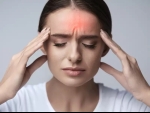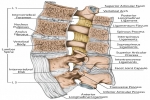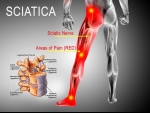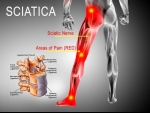Home » Blog
| Stem Cell, PRP, Acupuncture in Queens & Long Island, New York
Blog | Stem Cell, PRP, Acupuncture in Queens & Long Island, New York
The prevalence of joint pain due to arthritis in the United States is staggering. More than 92 million people report doctor-diagnosed arthritis or arthritis symptoms, namely pain and inflammation. When it comes to arthritis, there’s no benefit or valor to simply soldiering through the pain, because there are many steps, we can take to prevent more pain down the road. Our Pain Management Physician has extensive experience helping our patients better navigate the world of arthritis. The one thing that we’ve found, time and again, is that the earlier we intervene, the better your outcome, which is why you shouldn’t ignore arthritis pain.
Read more
Posted on: 06-Aug-2021 | No of views: 4326
If you have ever experienced pain, tingling, and/or numbness along your sciatic nerve, you have likely heard the terms piriformis syndrome and sciatica. While these two terms are sometimes used interchangeably, piriformis syndrome and sciatica are not the same and differ in terms of causes, symptoms, and treatments. The Underlying Causes Are Different - Both sciatica and piriformis syndrome can cause symptoms in your lower back, buttock, and/or leg, but their underlying causes are different.
Read more
A Frequent Source of Lower Back and Leg Pain - One of the most prevalent causes of low back pain occurs with injuries to the sacroiliac (SI) joint and ligaments. Young and middle-aged women are most susceptible to this condition, which can make sitting and standing difficult and painful tasks. If you are experiencing the painful symptoms of SI joint dysfunction, we can help you find relief with accurate diagnostic techniques and effective non-surgical therapy.
Read more
Posted on: 02-Aug-2021 | No of views: 3060
If you’re one of the millions of Americans (to be precise, 39 million adults and children) who suffer from migraines, you understand all too well the effect that this type of head pain can have on your life. While there’s still some mystery surrounding migraines, the medical world has made great headway in finding effective solutions for managing this neurological condition better. Our pain management consultant closely follows the latest research, and we’re pleased to offer effective migraine services to our patients.
Read more
This top-to-bottom guide gives an overview of spinal anatomy and the potential problems that can cause pain. Understanding your spine's anatomy and inner workings can help you better manage neck or back pain. Your spine is mostly comprised of 3 general regions:
1. The cervical spine contains 7 vertebral bones that run from the base of the skull down through your neck. This region of the spine has a natural inward curve (toward the front of the body), called a lordotic curve. It supports the head above and is relatively mobile, which also makes it more prone to injury. 2. The thoracic spine contains 12 vertebral bones, with the top 10 solidly connected to the rib cage and the bottom 2 connected to floating ribs.
Read more
You never realize how much you use your shoulders every day until one of them starts hurting. Shoulder pain can surface because of issues with the shoulder joint or from muscles, ligaments, and tendons surrounding it. Shoulder pain might get worse as you move your arm or shoulder, like lifting a box, doing yard work, or even swinging a tennis racket. Our physician will thoroughly examine patients experiencing arm pain and assess all symptoms before offering several forms of non-surgical treatment.
Read more
If you’ve been hobbled by pain, you’ll do almost anything to find relief, but perhaps not surgery if you can avoid it. While surgical solutions have come a long way, they certainly aren’t the only options available to you. Our pain management specialist understands that there’s no one-size-fits-all solution for pain. In an effort to provide our patients with options they can feel comfortable with, we offer the latest evidence-based, nonsurgical therapies available. Here's a look at five such therapies, which may be able to help you avoid surgery.
Read more
When you have sciatica, travel can be a daunting and painful experience. Whether it is for work or family, long car and plane rides are sometimes unavoidable. Here are 3 useful pointers to help manage your sciatica when traveling long distances:
1. Pack Smart and Minimize Lifting - Heavy luggage can place a large working load on your lower back, which in turn may provoke sciatica in your back and/or leg.
Read more
Pain Associated with The Sciatic Nerve Which Runs from The Lower Back, Down the Back of The Legs to The Feet. Pain and numbness run from the lower back or buttocks and down the back of the leg. Sciatica can affect both sides of the body or just one side.
Causes - Don’t be fooled by the term, “sciatica” most often does not involve damage to the sciatic nerve. Rather, the pattern of pain in the back of the leg is most often caused by irritation of the spinal nerves. The spinal nerves can be compressed by narrowing in the spine, known as lumbar stenosis, or inflamed by disc material that has bulged or herniated near the nerve, known as a disc herniation.
Read more
Every day is a battle to gain the upper hand on your pain and you’re tired of the lack of meaningful results. Or perhaps you’re dealing with major depressive disorder and you feel hope is running out. These are just two instances in which ketamine infusion therapy is providing much-needed help for those who are feeling helpless.
Read more
Love this Post? Spread the World






















